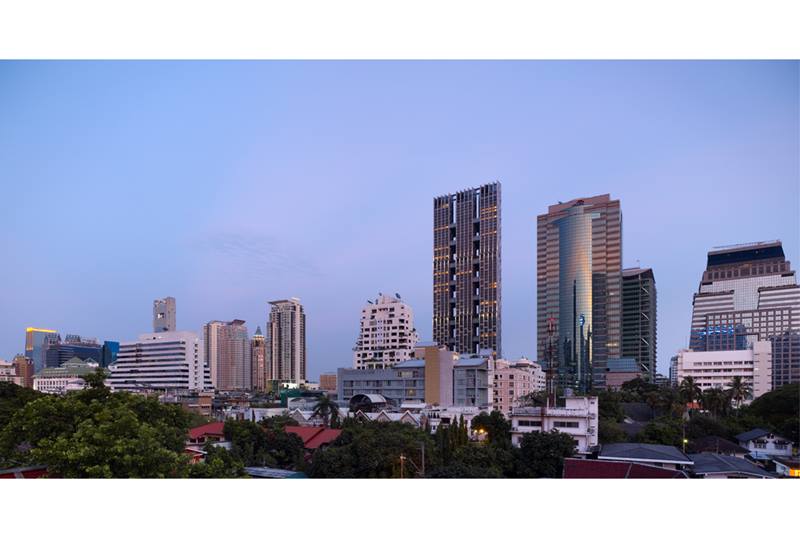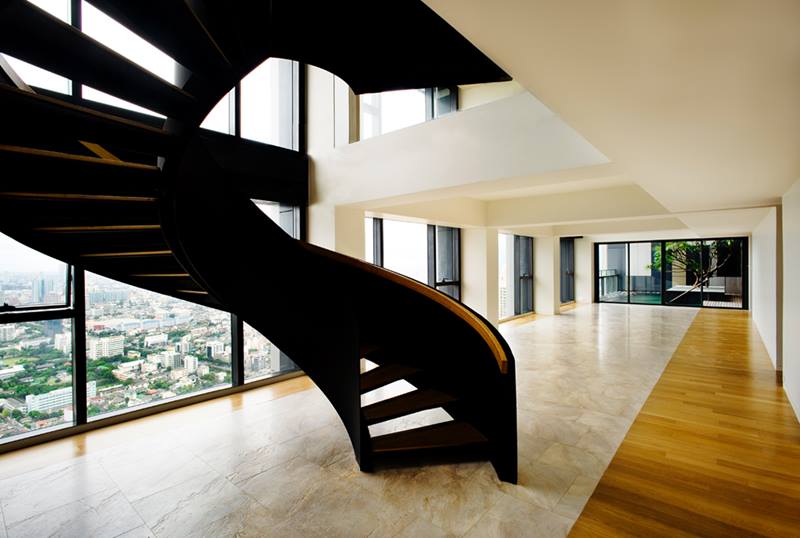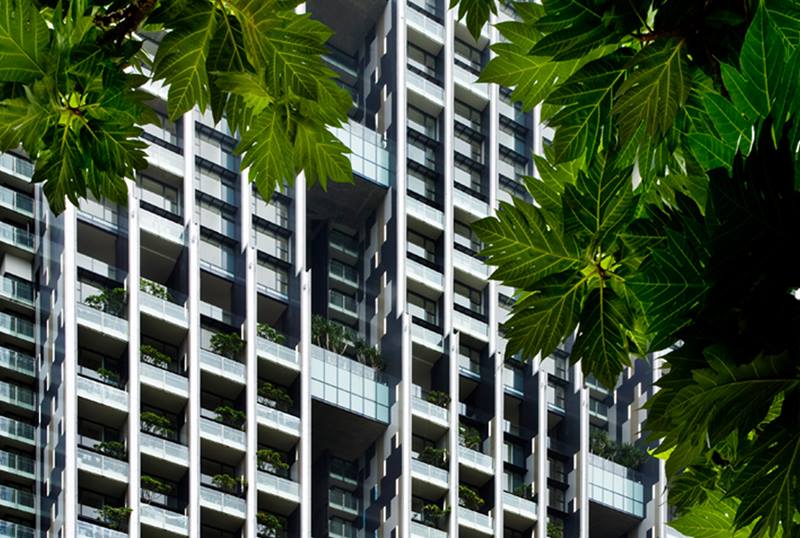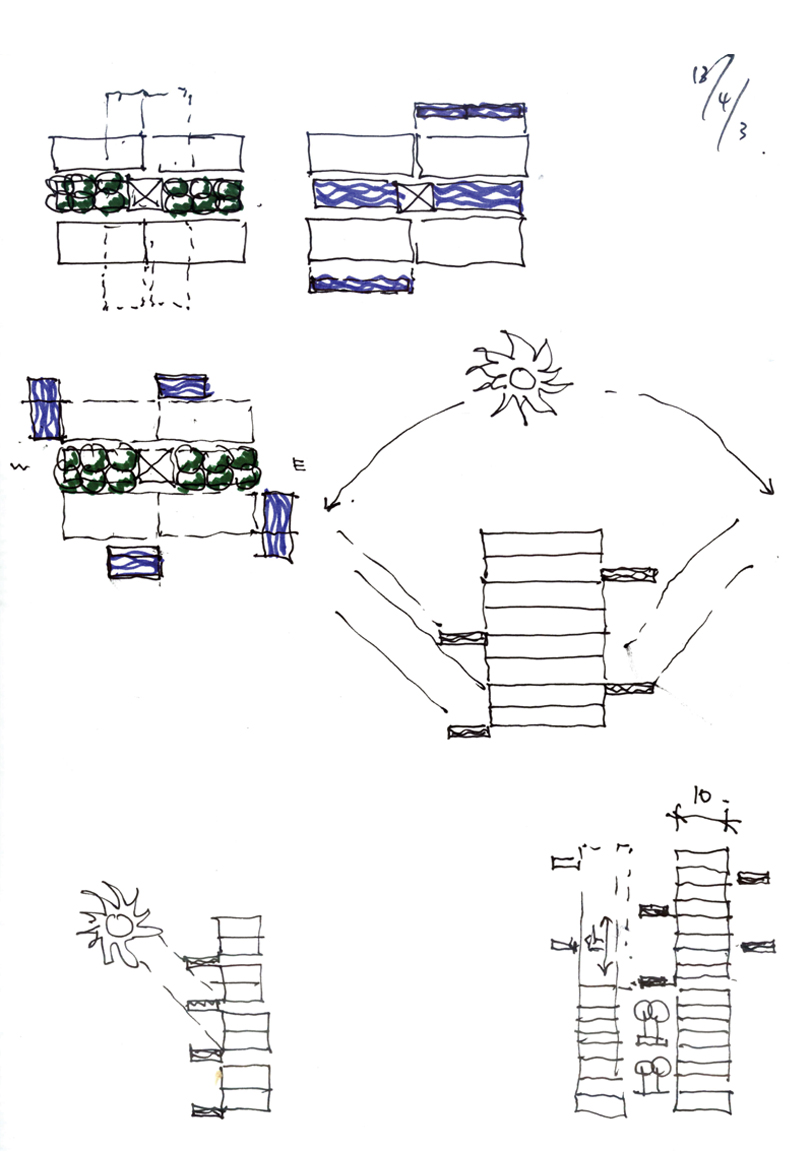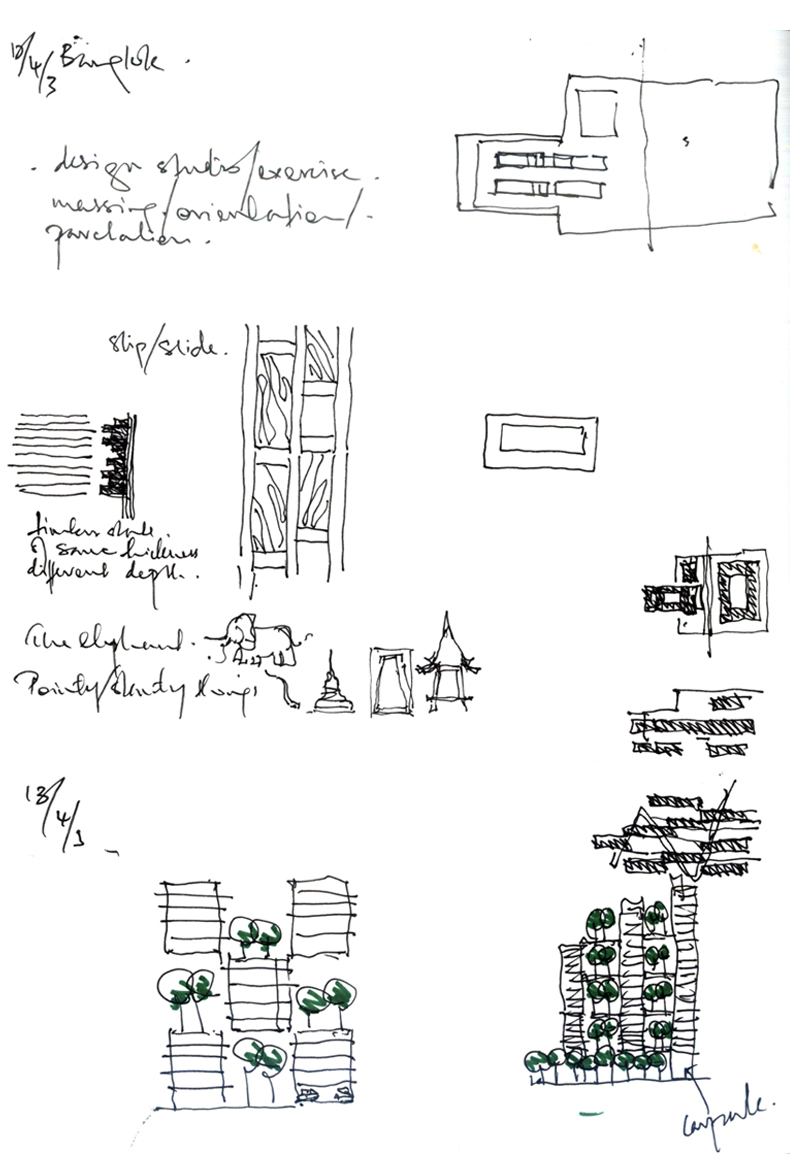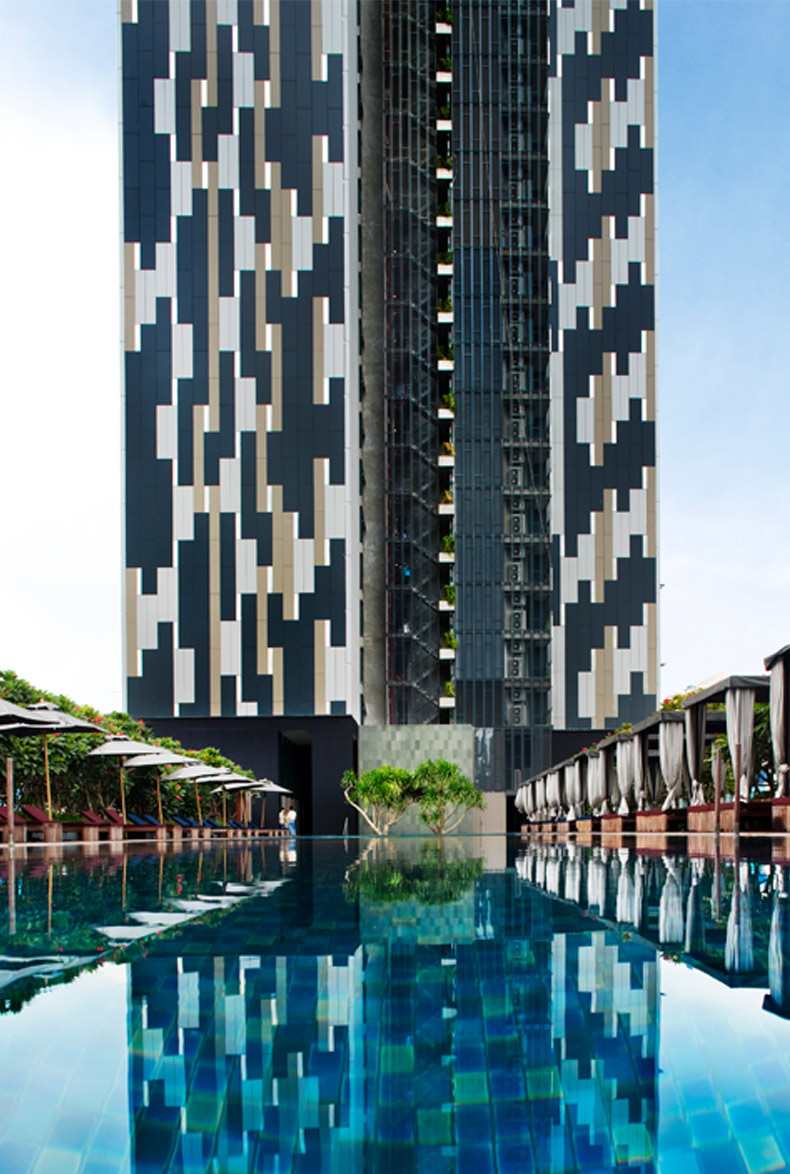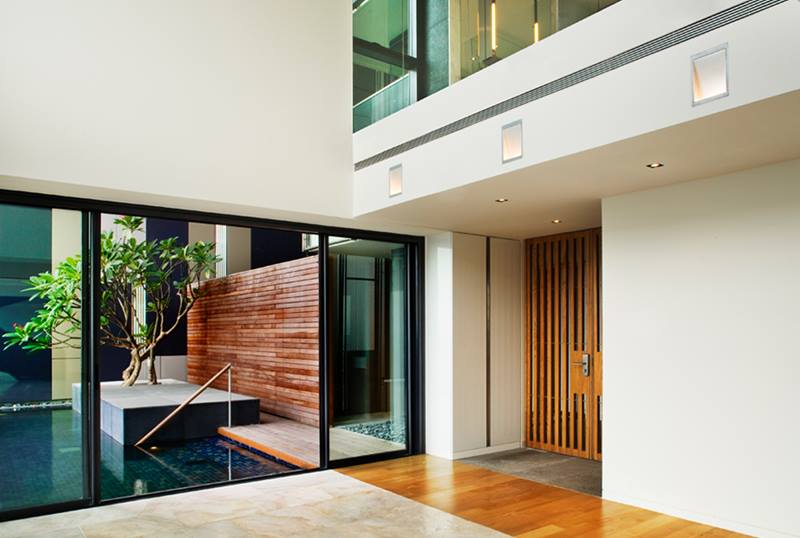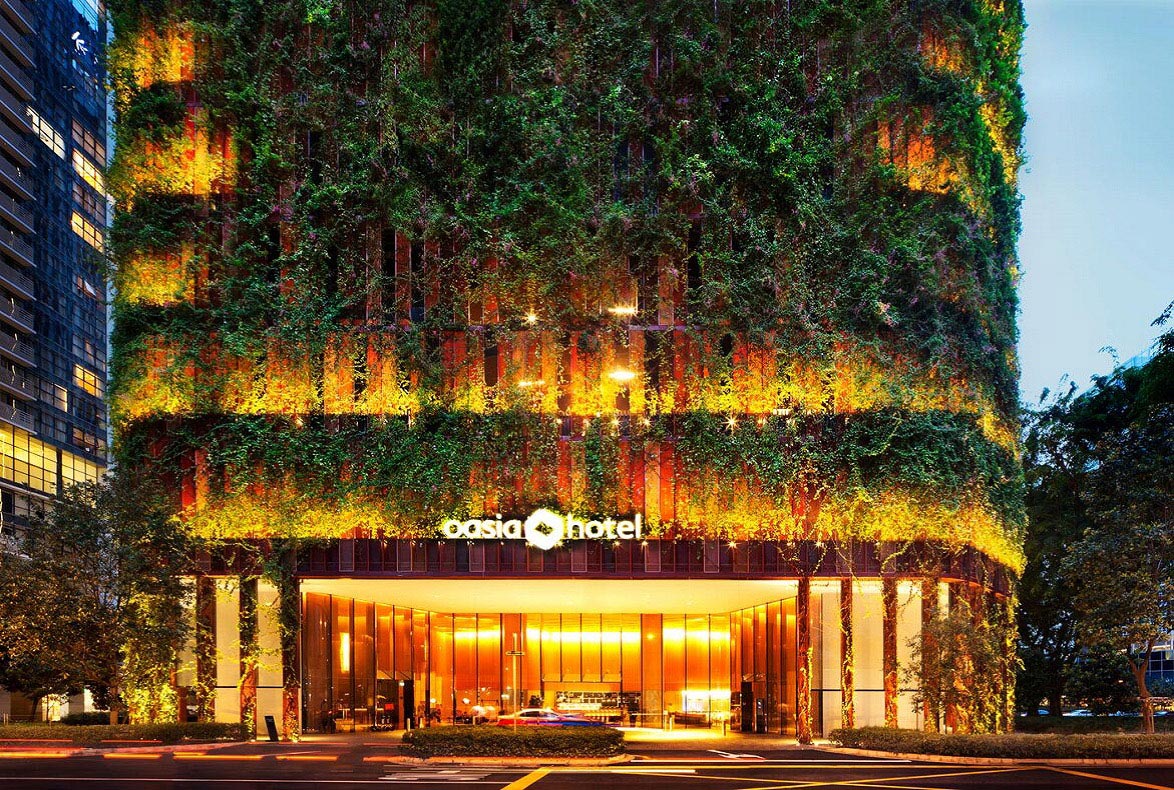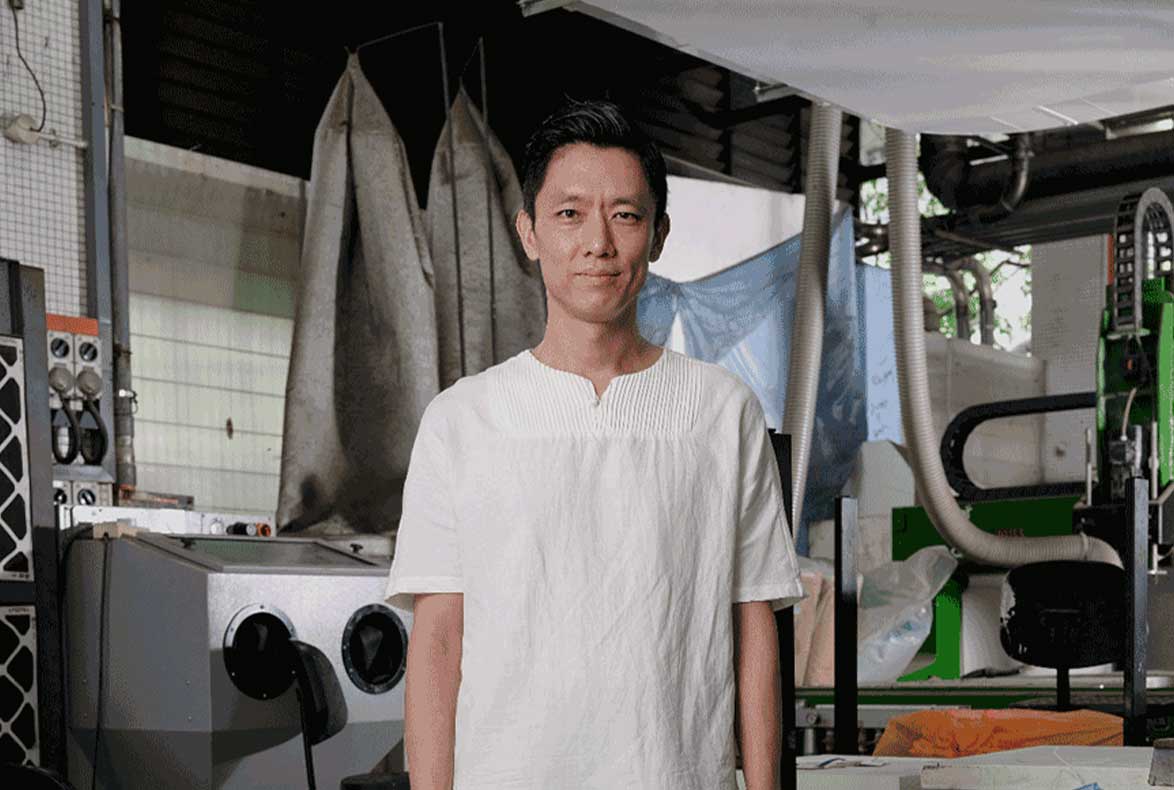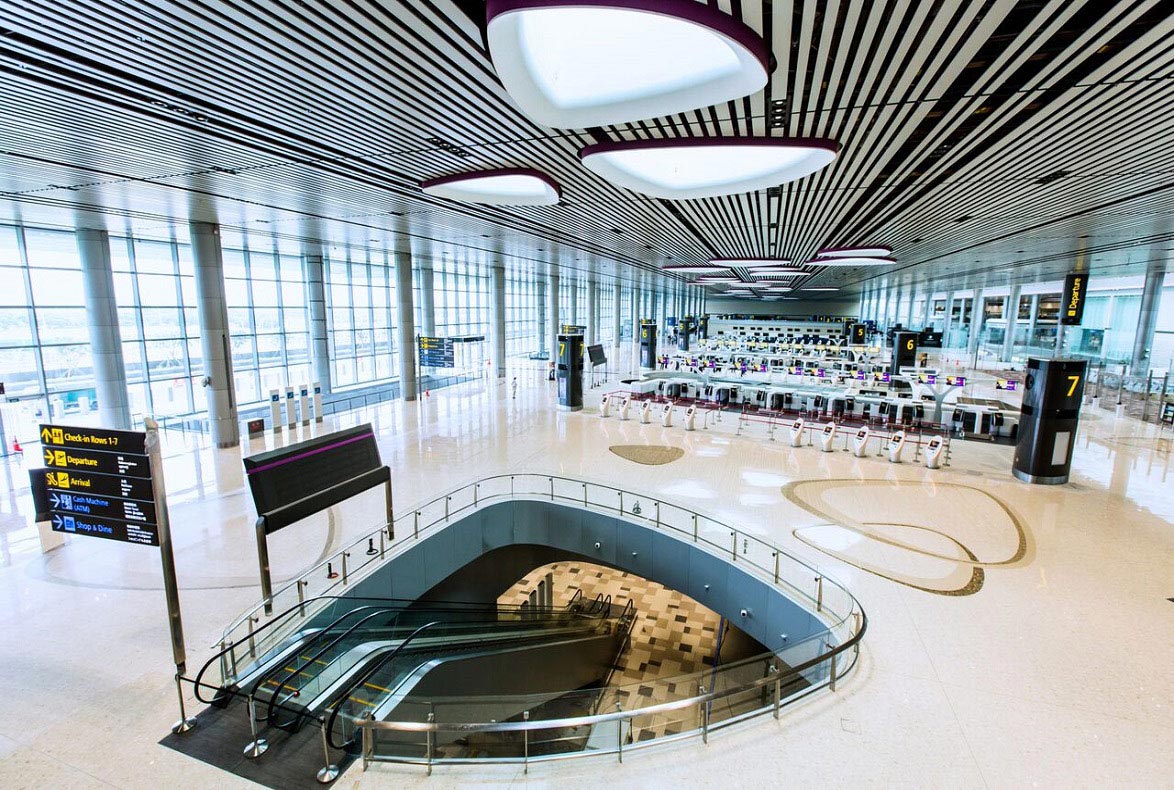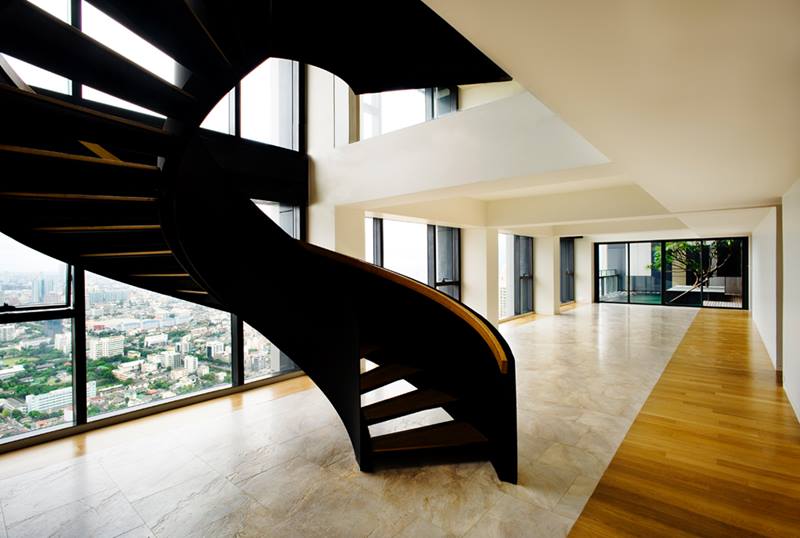
DESIGN OF THE YEAR 2009
The Met
WOHA Architects Pte Ltd
CONTACT
[email protected]
The Met in Bangkok, Thailand is the latest notable project from the team at WOHA. The project comprises housing, hotel and retail space in the heart of Bangkok.
The innovative building design is based on the concept of an indoor-outdoor environment in the sky, and explores strategies of high-density living in a high-rise tropical environment. It was inspired by the concrete jungle of Bangkok, the forms of traditional Thai decoration and textiles, by ideas of comfortable living in tropical Asia, and the urban aspects of high-rise buildings. Says WOHA, “The Thai real estate market is very adventurous, we thought that having penthouses every five floors would appeal to them … We had developed over several theoretical projects the idea of using the outdoor spaces in between high-rise towers in the tropics. This project was a chance to build some of these in reality.”
High-rise designs have traditionally followed temperate models, which were developed in New York or Chicago with cold weather and strong winds. This resulted in apartments that are compact, insulated from the exterior and without sun shading or overhangs. In this typology, buildings are protective shells designed to shield the inhabitants from the harsh weather.
By contrast, design for the tropics should take advantage of year-round warm weather, capture breezes, and be laid out for crossventilation, incorporating outdoor spaces, verandas and gardens. In this context, buildings are framing devices of minimal environmental devices for an indoor-outdoor lifestyle.
The concept for The Met is to develop an advanced form of high-rise living for the tropics, developed less from western temperate models than from research on possibilities of low-wind, tropical climate in dense urban conditions. This project implemented several ideas developed originally for a competition in Singapore for public housing.
Explains WOHA, “Our solution is very different from the preconceptions of a Western culture high-rise tower. Western high-rises are impervious, sealed city-objects and this model was being imported to Asia and constructed everywhere. The incorporation of the Asian notion of dwelling – an indoor-outdoor compound, where the spaces between buildings is very important – into a high-rise form is important, and will affect how people enjoy living in rapidly growing, dense Asian cities.”
WOHA’s concept for The Met was designed from first principles to create a better lifestyle for central city living in the tropics. Going high in the tropics means cooler breezes, less dust, more privacy, more security, less noise, and better views. To take advantage of these conditions, the design incorporates a staggered arrangement of blocks that allows cross-ventilation, views to both the city and the river, and enhances the gentle breezes by funnelling them between towers. The gaps between the towers are bridged with sky gardens that provide exterior entertaining areas directly off living areas, including pools and gardens. The orientation of the staggered blocks allows the sun to penetrate daily between the blocks on its regular tropical sunpath.
The apartments’ interiors interact strongly with the exterior, with full-height glazing, balconies, sky gardens and sky terraces. Sun shading and overhangs provide weather protection and screen and filter the strong tropical light. Walls of greenery provide sun-shading that converts heat into oxygen, improving local air quality.
Common areas are spread throughout the towers, offering inhabitants a variety of experiences, from the intricately designed carpet of water, stone and vegetation at ground level, to the extensive indooroutdoor facilities at the pool level, to libraries, barbeques, and function areas at sky terraces.
The hotel block explores related ideas, providing guests with huge outdoor balconies incorporating water features and trees, staggering up the façade to provide a layer of interlocking external spaces.
As with any innovative project, the team encountered various challenges along the way. WOHA says, “Bringing this idea into reality was technically challenging, as highrise buildings have many technological constraints. Keeping the concept intact, while resolving many technical and budgetary issues, was the biggest challenge.” The end result, however, is stunning, and demonstrates WOHA’s belief in innovative design. Says WOHA, “Innovation is how our future world is shaped. We have a responsibility to innovate a better world for ourselves.” The Met also reflects WOHA’s flair for creating spaces that delight the end-user and enhance the environment. The external spaces between the towers are dramatic, and the scale and drama of these spaces are unheard of in a residential tower. WOHA comments,
“Adding a new high-rise building to a city is a big responsibility as it affects so many people, so seeing it achieve the original vision is very satisfying.”
The WOHA team is gratified to be recognised once again for its work, this time for a project outside of Singapore. “It is a very great honour to have this Award. Our team morale is hugely lifted by such prestigious peer-reviewed, external validation.”
About the Designer
WOHA
Wong Mun Summ
Richard Hassell
Sim Choon Heok
Punpong Wiwatkul
Puiphai Khunawat
Esther Soh
Alan Lau
Alina Yeo
Cheah Boon Kwan
Goh Soon Kim
Jose Nixon Sicat
Techit Romraruk
ARCHITECTS IN ASSOCIATION
Tandem Architects (2001) Co Ltd
OWNER
Pebble Bay Thailand Co Ltd (HPL Singapore)
MECHANICAL ENGINEER
Lincolne Scott Ng Pte Ltd
QUANTITY SURVEYOR
KPK Quantity Surveyors Pte Ltd
CONTRACTOR
Bouygues Thai Ltd
CIVIL AND STRUCTURAL ENGINEER
Worley Pte Ltd
LANDSCAPE CONSULTANT
Cicada Pte Ltd
ENVIRONMENTAL IMPACT ASSESSMENT CONSULTANT
ERM-SIAM Co Ltd
WOHA
Wong Mun Summ
Richard Hassell
Sim Choon Heok
Punpong Wiwatkul
Puiphai Khunawat
Esther Soh
Alan Lau
Alina Yeo
Cheah Boon Kwan
Goh Soon Kim
Jose Nixon Sicat
Techit Romraruk
ARCHITECTS IN ASSOCIATION
Tandem Architects (2001) Co Ltd
OWNER
Pebble Bay Thailand Co Ltd (HPL Singapore)
MECHANICAL ENGINEER
Lincolne Scott Ng Pte Ltd
QUANTITY SURVEYOR
KPK Quantity Surveyors Pte Ltd
CONTRACTOR
Bouygues Thai Ltd
CIVIL AND STRUCTURAL ENGINEER
Worley Pte Ltd
LANDSCAPE CONSULTANT
Cicada Pte Ltd
ENVIRONMENTAL IMPACT ASSESSMENT CONSULTANT
ERM-SIAM Co Ltd
Typical unit with private pool
East Elevation
View looking down in between the residential blocks
Detailed view of north façade
50-metre swimming pool on the ninth floor
View from apartment looking into private sky terrace and pools
North Elevation
Insights from the Recipient
Sim Choon Heok: Most tropical high-rise housing in developing countries is designed by consultants from temperate countries who tend to replicate cold-climate models. In the tropics, light winds, year-round balmy weather, constant temperatures and high humidity make outdoor living desirable. To make the most of these opportunities, we created cross-ventilated tropical houses in the sky with breezeways, full exposure to light and views, outdoor living areas, planters and high-rise gardens, and open-air communal terraces with barbeques, libraries, spas and other facilities. These sky terraces, both private and public, link the blocks every five storeys, creating dramatic yet human-scaled external spaces in the sky.
Citation
Jury Citation
Nominator Citation
MR PATRICK BINGHAM-HALL
PUBLISHER
PESARO PUBLISHING PTE LTD
The Met in Bangkok represents an innovative approach towards high-rise tropical living. At 66 storeys high, it is impressive not only as a strong visual landmark within a crowded Bangkok landscape, but also for its thoughtfully designed spaces. The Jury appreciates its highly resolved design, with its staggered plan of apartment blocks that stimulate cross-ventilation through the individual units. The building also engages its overall organisation to facilitate the movement of breezes and to provide sunlight and views for the occupants.
Besides cross-ventilation, the “tropicality” of the building is clearly evident from its numerous exterior environments, such as pool areas, balconies, sky gardens and sky terraces spread throughout the tower. The building has succeeded in creating microclimates that shield its occupants from the harsh tropical elements. Sun shading and overhangs provide weather protection and filter direct sunlight to provide a comfortable living environment.
Seen from afar, the building’s active façade with its mirror-finished stainless steel inserts and sky gardens is a bold addition to the Bangkok landscape. More than just a new edifice, the Jury commends The Met for creatively redefining the concept of tropical high-rise living, making it a model within a high-density environment.
For a city that is perceived as one of the world’s most exotic, Bangkok has a paucity of noteworthy architecture, historic temples and palaces notwithstanding. This is not to denigrate the achievements of the local Thai architects who have designed thoughtful and dignified domestic projects, but it appears that large-scale architecture cannot compete with the glitz, the colour and the chaos of Southeast Asia’s most glamorous city. Highrise towers dot the cityscape in a haphazard and incoherent pattern, running the gamut of undistinguished stylings from the purely functional to the collapsible post-modern. Apart from any aesthetic disillusionment, it is also disappointing to note that no real effort has been made to devise more appropriate ways to live and work in such a hot and physically challenging environment. WOHA (working with the local Tandem Architects) has addressed these conundrums head-on: as they say, “In such a messy and loose city, an architectural response can only work when it is tight and controlled, so that it stands out from the background.”
The Met is a remarkable building: a 66-storey structure comprising six apartment blocks on a staggered plan. It is indeed “tight and controlled”’, both in its appearance and its programme. Seen from afar, the massive slab of the building stands unadorned and proud as it faces the heart of Bangkok from the south, in total contrast to its ‘featurised’ high-rise neighbours. The monumentality of the slab is relieved by metal strips running the full height of the towers, by sparkling silver panels, by sky gardens, and by the complexity of the façades. The Met has created a most desirable form of high-rise living in a tropical city, one that takes advantage of the heat and captures the breezes. The staggered plan is an ingenious method of stimulating crossventilation, providing sunlight and supplying views, particularly as the levels get higher and the breezes get cooler. The Met thus serves as an alternative to the prevailing tropical apartment block type, which has inevitably trodden the familiar path of the European and American cold-climate model.
The Met demonstrates WOHA’s desire to provoke a fundamental change in tropical apartment living, as it follows on from their two ground-breaking apartment towers in Singapore – 1 Moulmein Rise and Newton Suites – and directly from WOHA’s research and design evolution through such unbuilt projects as their Duxton Plain competition entry of 2001. The ideas behind these Singaporean projects have now been exported in the hope that architecture can improve the quality of life in tropical Asia. As WOHA observes, “When we first went to Bangkok, we were shocked to see the developments done by foreign architects, they were American-model high rises, and that’s when we instantly knew we could make a difference in Bangkok.”
Henry-Russell Hitchcock wrote in 1978, “Will the countries of Eastern Europe and the new countries of Asia and Africa soon be making contributions to a new world-style, such as in the last few decades first the North Americans, next the Latin Americans, and then the Japanese made?” The Met is tangible evidence that WOHA is doing just that, from a new country in Asia, just at a time when the new problems of climate change, overcrowding and sustainability must be addressed and overcome.

